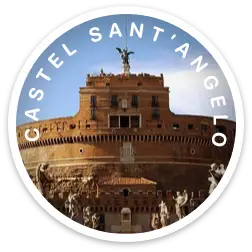Italy
Discover Italy
Fun Foods
Pizza, Lasagna, Risotto, Focaccia, Gelato
Romans once ruled most of the known world from this boot-shaped country. They built roads so straight you can still drive on them today. Two thousand years later, we're still copying their ideas.
Italy sticks out into the Mediterranean Sea like a giant boot kicking a soccer ball. That ball is Sicily, an island at the toe. People have fought over this sunny peninsula for thousands of years.
The Roman Empire started as one small city and grew into the mightiest power on Earth. Romans built aqueducts, sewers, and heated floors. They invented concrete and used it to build the Colosseum, where 50,000 people watched gladiators fight.
Julius Caesar conquered lands from Britain to Egypt. He got too powerful, and his friends stabbed him to death in the Senate. Roman politics were brutal.
The empire eventually collapsed. Barbarians invaded, and Europe entered the Middle Ages.
Then Italy sparked the Renaissance, a rebirth of art and ideas. Leonardo da Vinci painted the Mona Lisa and designed flying machines. Michelangelo spent four years painting the Sistine Chapel ceiling, standing on scaffolding with his neck craned back.
Italy wasn't one country until 1861. Before that, it was a patchwork of city-states that couldn't stop fighting each other. Venice was its own empire. Florence had the Medici family running everything.
Take your kids to the Colosseum in Rome and imagine gladiators battling lions. Venice has no cars, just boats floating down canals. Pompeii is a whole city frozen in ash when Mount Vesuvius erupted in 79 AD.
Italians take food very seriously. Pizza was invented in Naples. Pasta comes in over 300 shapes, and arguing about the right sauce could start a family feud.
Gelato is better than regular ice cream. Don't argue about this.
Carnevale in Venice fills the streets with masks and costumes every February. Ferragosto on August 15th shuts down the whole country for summer vacation. Italians know how to celebrate.
Soccer is practically a religion here. So is Sunday lunch with the family. Nobody rushes dinner.


Experience Points


XP EARNED OUT OF 0
Points Breakdown
| Sticker Collected | 0 XP |
| Card Collected | 0 XP |
| Bonuses | 0 XP |
| Total | 0 XP |
Your travel history

First Visit
---
Last Visit
---
You've logged 0 visits.
Sticker Collection

Florence
Soak in the beauty of the architecture and history of the capital of the Tuscany region.

Matera
Ancient cave dwellings carved into cliffs for 9,000 years, now luxury hotels and UNESCO treasures.

Milan
Famous for its fashion, entertainment, and art, Milan is the 2nd largest city in Italy.

Pisa
This ancient port city is famous for its leaning bell tower.

Rome
Home to over 900 churches and 280 fountains, this historic capital city should not be missed.

Venice
This beautifully unique city was built in a lagoon and connected by narrow streets, canals, and over 400 bridges.

Appian Way
Known as the "Queen of Roads", this ancient road was built in 312 BC to move military supplies.

Arch of Trajan
A 15-meter tall arch built in honor of Emperor Trajan.

Arco della Pace
This arch was built in the 19th century to celebrate peace between European nations.

Basilica di San Lorenzo
Visit the burial place for the Medici family, a rich and powerful family of rulers in Italy.

Castel Sant'Angelo
A Roman emperor's tomb named for the archangel who appeared to end a devastating plague.

Castello Sforzesco
This castle was built in 1450. It was converted to a fortress in 1526 before being restored to its current state today.

Cattedrale di Pisa
This breathtaking Roman Catholic cathedral was constructed in the 11th century.

Cattedrale di Santa Maria del Fiore
Enjoy panoramic views of Florence from the top of the third largest church in the world.

Colosseum
Explore the ancient amphitheater where gladiator battles entertained crowds of up to 80,000 people.

Doge's Palace
Built in 1340, the palace remains one of the main landmarks of Venice.

Duomo di Milano
The magnificent basilica took 6 centuries to complete.

Ercolano
Discover the well-preserved ruins of this ancient Roman town destroyed when Mount Vesuvius erupted.

Forum of Nerva
An imperial forum completed under Emperor Nerva around AD 97.

Forum of Trajan
A grand Roman imperial forum built by Emperor Trajan.

Leaning Tower of Pisa
Climb to the top of the leaning tower that draws over 1 million visitors a year.

Palazzo Vecchio
Overlooking the gallery of statues, the town hall houses many famous paintings and works of art.

Pantheon
This well preserved temple from ancient Rome was built to "honor all Gods".

Pompeii
Buried under ash when Mount Vesuvius erupted, the city wasn't discovered again until 1748.

Ponte Vecchio
Once the only bridge over the Arno River, the bridge has become a lively spot for visitors to explore.

Rialto Bridge
The oldest bridge spanning the Grand Canal, shops were added in the 15th century to pay for its maintenance.

Roman Forum
An open-air location where important political, religious, and other social events took place in ancient Rome.

Santa Maria delle Grazie
Home to Leonardo da Vinci's famous painting called "The Last Supper".

Spanish Steps
Built in 1732, climb the 135 steps for picturesque views of the surrounding piazza.

St. Mark's Basilica
Visit this impressive Roman Catholic church that dates back to the 11th century.

Trajan's Market
An early shopping mall built over 1900 years ago.

Trevi Fountain
Visit this huge 300 year old fountain and take part in the fun tradition of throwing a coin in over your left shoulder.

Verona Arena
Made of pink and white limestone, the arena was built during the reign of Emperor Augustus.

Victor Emmanuel II National Monument
Completed in the 1930's, the monument honors Victor Emmanuel II, the first king of a unified Italy.

Villa Adriana
An impressive ancient Roman villa built by Emperor Hadrian in the 2nd century AD.

